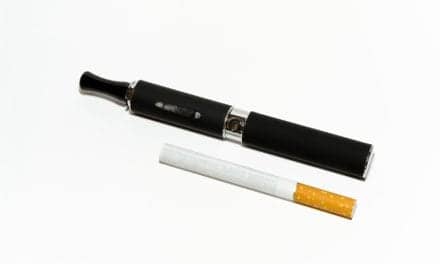CF patients can achieve greater independence by mastering various airway clearance techniques and exercises.
 Until recently, many patients with cystic fibrosis (CF) were “always at home” depending on the skills of mom, dad, or their caregiver who provided the conventional slap on the back to remove bronchial secretions. These children and teens were not active, did not visit many places, could not attend a sleepover, or go camping. Fortunately, this situation is changing due to the many modalities CF patients can practice independently in a home setting.
Until recently, many patients with cystic fibrosis (CF) were “always at home” depending on the skills of mom, dad, or their caregiver who provided the conventional slap on the back to remove bronchial secretions. These children and teens were not active, did not visit many places, could not attend a sleepover, or go camping. Fortunately, this situation is changing due to the many modalities CF patients can practice independently in a home setting.
The latest statistical information from the CFF (Cystic Fibrosis Foundation) registry indicates that 30,000 Caucasians have CF. Currently, 21,044 people are followed at CF centers that are affiliated with the foundation. Nevertheless, there are other population groups of people with CF who are not registered and may not be aware of the advancements in home therapies.
According to Jeffrey L. Tarnow, RRT, adult clinical coordinator for the Respiratory Care Department and clinical research coordinator for the Department of Anesthesia at Moffit-Long Hospital Medical Center at the University of California, San Francisco, numerous home options are available, which provide alternatives to chest physiotherapy. “That is important to physicians, respiratory therapists, and CF patients because many of the latter tend to be noncompliant. These patients like to be independent and now these alternative modalities are out there for them to use,” he says.
Before a decision is made about which airway clearance technique to use, the patient’s age and motivation factor must be taken into consideration. Some hospitals are able to provide qualified teachers who educate patients about the various at-home therapies that are available, while other hospitals can not. In any case, patients must first consult with their physician and respiratory therapist when determining which therapy to use, because they will need a prescription.
Equipment Options PEP Therapy
Positive expiratory pressure (PEP) was originally developed in Denmark and is so widely applied in that country that other methods are rarely used. It has gained popularity and acceptance elsewhere in Europe and in Canada as well. CF patients use a handheld device that has a fixed-orifice flow resistor with an integrated pressure indicator (masks are also available). In order to perform this therapy, the patient sits upright and takes slow, deep breaths but not to total lung capacity. PEP therapy is performed with a 3-second breath hold, and then an active (but not forceful) exhalation through the fixed-orifice resistor device. PEP therapy is performed in three sets of 10 to 15 breaths and is most effective in the morning and evening. The patient then does a huff cough at the end.
“At the hospital, we sit with patients and teach them how to find the right size orifice to create an expiratory pressure that is between 10 and 20 cm H2O,” Tarnow says. “We aim for 15 cm.” Tarnow also points out that the goal is to prolong the expiratory phase and prevent premature airway collapse. Consequently, the expiratory airflow is able to mobilize mucus toward larger airways where it can be expectorated.
Oscillating PEP
The oscillating PEP device was developed in Switzerland. This modality combines PEP techniques with high-frequency oscillation at the airway opening.
“The small handheld oscillating PEP unit helps to remove secretions. The pipe-shaped device has a mouthpiece on one end and a protective plastic cover on the other end with a steel ball that rests in a plastic cone inside the device,” Tarnow says. During exhalation, the ball flutters in the pipe, causing the oscillation to be transmitted through the airway. The device helps mobilize secretions by vibrating the airway to loosen mucus and decrease the chance of airway collapse. The patient can control the pressure by changing the flow rate or the oscillation by changing the angle of the device in the mouth.
While using the device, CF patients can sit in a chair or bed with their head slightly tilted back. They hold the device so that it is level with the ground. They then take a larger breath than normal, hold it for 2 or 3 seconds, and exhale in a level manner. It is important that the device produce a range of oscillation frequency between 6 and 20 Hz. These vibrations, coupled with an increase in expiratory pressure and airflow, facilitate the clearance of secretions. This device is used two to three times a day.
These PEP devices are patient-activated. Some brands fit in a purse, briefcase, or backpack, allowing patients to perform PEP therapy anywhere. The following two modalities are machine-activated:
• The Vest
In the past 10 years, methods for applying high-frequency oscillation to the chest wall have been devised. “The vest is a high-frequency chest wall oscillator,” Tarnow says. “The vest looks similar to a safety vest that would be worn skiing. It has Velcro wrapped around the shoulders and around the waist to make sure it fits properly. Two hoses (connectors) lead from the vest to the machine and look like a space suit where they connect.”
Once the machine is turned on, the vest setting is inflated. In theory, the variable, high-frequency oscillation that is being applied directly to the chest wall causes increased airflow in the airway. This results in improved gas-liquid interaction and the movement of mucus. The CF patient uses a foot peddle to regulate the machine.
The vest is kept on for approximately 30 minutes. The patient may stand or sit during treatment. Used in hospitals around the country, the vest comes in an array of sizes from a child-small to an adult-large.
• Percussion Device
“Another handheld device was developed by Dr Forest Bird,” Tarnow explains. “Known as the intrapulmonary percussive ventilation (IVP) device, it is placed in the mouth and delivers high flow jets of gas to the airway by a pneumatic flow interrupter at a rate of 100 to 200 cycles per minute.”
Once again patients have the option to control the duration of the percussion because it is machine-activated. When the device is in their mouth, they can add a bronchodilator so medication can be delivered at the same time that secretions are being cleared. Most of the time, the modality is used three times a day for 25 minutes.
• Mechanical Percussion
Mechanical percussion devices mimic the “slaps on the back” delivered by therapists, with some added advantages, most obviously that a patient can utilize these devices without the help of a therapist. They come in a variety of forms from handheld to those that can be worn by or attached to the patient. Whereas other devices focus on either vibration or percussion, mechanical devices use a combination of these therapies to loosen, mobilize, and clear secretions within the lungs. Mechanical percussion also provides consistent force and rate of percussion for long periods of time.
While mechanical percussion is an effective way to clear secretions, it is crucial that it be combined with the correct postural drainage position. Postural drainage uses gravity to help drain mucus from the lower airways into the larger central airways, where it can be coughed out. Anywhere from six to 12 different positions may be used during a treatment session, depending on which lobe or lung segments are to be drained.
What Do Studies Show?
According to Tarnow, PEP therapy tends to be easier than chest physiotherapy for CF patients. In 1998, a study was performed at two skilled nursing facilities (SNFs) in Michigan; 20 patients were placed in a PEP group and 20 patients in a control group. For all patients, the number of days spent in the SNF and the number of treatments performed were tracked. The PEP therapy group had 5 to 7 fewer days on average of respiratory intervention and 15% to 20% less respiratory treatment. “There was also more sputum production, better aeration of lungs, and decreased breath sounds without handheld nebulizer treatments,” Tarnow points out. “Patients liked the fact that they could perform PEP therapy by themselves after training, and respiratory therapists liked the easy monitoring of the patients as well as being able to focus on other treatments.”
Experts in the field agree that more studies need to be conducted and newer modality home treatments need to be compared as to ease of use, compliance, and results.
Exercise
Depending on the severity of the CF patient’s disease, exercise options are available. An exercise program should be developed in consultation with the patient’s physician. According to the CFF, “Exercise has been shown to increase fitness, decrease shortness of breath, improve heat tolerance, and help mucus clearance.” Medical experts also believe that regular exercise will decrease depression and improve CF patients’ self-image.
Regardless of which exercise the CF patient chooses, it cannot take the place of in-home chest physiotherapy. In Tarnow’s experience, many younger CF patients enjoy biking. “Walking is also good for the heart and leg muscles; however, jogging is too strenuous for these individuals.”
The CFF recommends that an individual select an exercise program that will be done today but not ignored tomorrow. CF experts recommend some type of aerobic exercise such as biking, swimming, aerobic dancing, stair-stepping, or walking.
Vicki Gerson is a contributing writer for RT Magazine.









